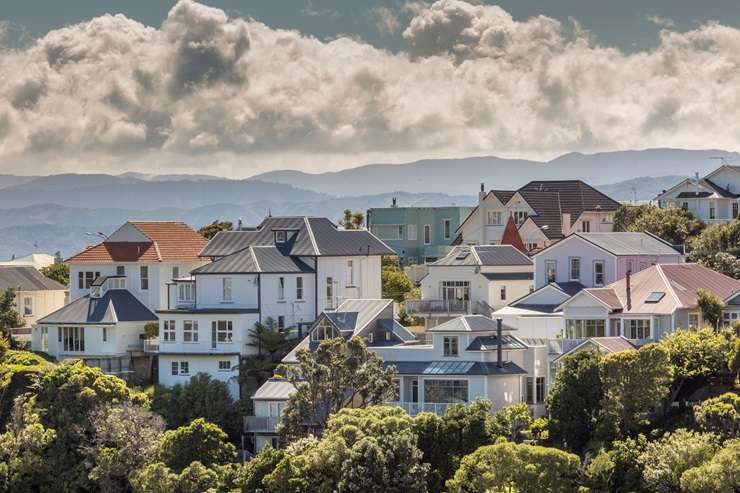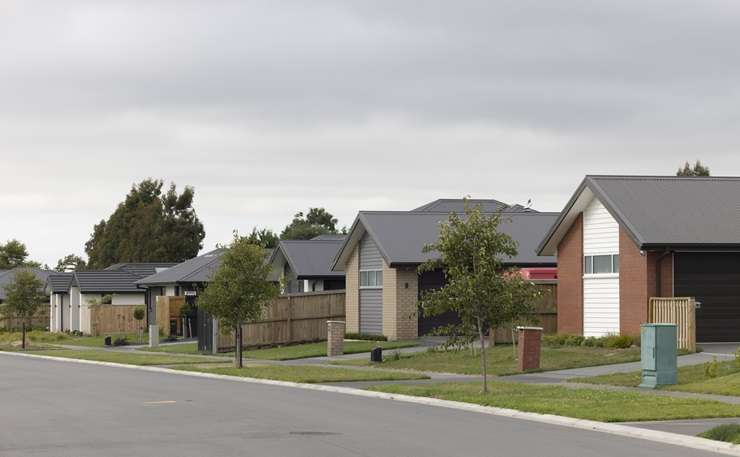The housing market recovery to post-Covid peaks will be gradual throughout 2024, according to economists and market analysts, but Wellington, Auckland and investor-centric suburbs are likely to rebound faster on the back of record migration.
Figures from OneRoof partner Valocity show nationally house prices are down 14% from the post-Covid peak in February 2022; the largest losses in Wellington (25%) and Auckland (19%). Most economists and analysts are picking 2025 for a full rebound with interest rates expected to continue to hover around 7% for much of 2024.
Start your property search
Valocity senior research analyst Wayne Shum said interest rates would need to drop significantly before house prices rebounded to post-Covid levels.
“We had interest rates at 3% at the last peak and we now have interest rates of around 7% which are expected to last at least another year so it will be some time before we get back to those levels,” he said.
He believed certain areas would bounce back faster than others.
“With record net migration, some investor suburbs may come back faster. A lot of these people coming to New Zealand are renting and on work visas or student visas. They’re not coming in to buy houses so those areas that have those smaller houses for rentals may come back faster.”
Valocity figures show Wellington has fallen the furthest, 25% since its peak in March 2022, followed by Auckland with a 19% reduction in values. Hawke’s Bay and Manawatu close behind with reductions of 16.5% and 15.2% respectively.
But areas like Christchurch and the West Coast of the South Island had continued to perform well on the back of good rental yields, said Shum.

Valocity senior research analyst Wayne Shum: “With record net migration, some investor suburbs may come back faster." Photo / Fiona Goodall
Canterbury, Southland, and the West Coast experienced the smallest reductions since the peak in 2022 with falls of 6.5%, 4.1%, and 2.9% respectively.
CoreLogic chief economist Kelvin Davidson estimated a slightly longer tail to reach post-Covid peaks nationally. Davidson said with an average 13% drop in values from the peak to trough, and a forecast 4-5% annual gain, prices would push back to 2021 levels by 2026-27.
Read more:
- Revealed: How much mortgage repayments have jumped in your suburb
- The 35 cheapest city suburbs where buyers can still grab a bargain
- Sold in four days: Desperate buyers smash the competition with $3.3m bid
“I think the regional aspect is important. Even if the national average rises, that won’t apply everywhere. I’d think areas such as Auckland and Wellington may outperform a little, because that’s where the market has fallen the most and those areas are now benefitting from high inward migration, especially Auckland,” said Davidson.
He pointed to the Global Financial Crisis cycle which saw a peak in 2007 and recovery in 2012 as a similar timeframe, the Reserve Bank also signalling prices might regain losses over that similar horizon too.

Houses in Wellington. The average property value in the city fell 27% during the slump. Photo / Getty Images

Rolleston in Christchurch. The city's average property value fell just 7.75% from peak. Photo / Peter Meecham
Bayleys head of insights Chris Farhi predicted a slightly faster recovery driven by surging migration, a dwindling pipeline of new housing supply, government policy changes injecting demand, and an anchoring effect, where past peak prices served as reference points, potentially influencing market behaviour.
“Our working theory is prices will recover faster than people might expect because of surging migration. More people need more homes, but home building is slowing down so the pipeline of new supply is getting tighter,” he said.
Changes to government policies around interest deductibility were also expected to inject demand in the market.
He expected Auckland and Wellington to recover fastest on the back of surging migration, but the effects would likely be seen in the rental market first.
“We expect this will put pressure on first-home buyers to act, and we’re already seeing this with the recovery in activity from first-home buyers.”

Ray White chief economist Nerida Conisbee: "It does look like in New Zealand the rate of recovery will probably be fairly similar to what we saw in Australia." Photo / Supplied
Nerida Conisbee, chief economist at Ray White, drew parallels between Australia’s housing market recovery and New Zealand’s ongoing scenario. Conisbee highlighted the gradual stabilisation and growth in certain regions.
In Australia, she said, smaller areas like Adelaide and Perth got back to their peaks faster but then it started to flow through to the cities.
“Within about 10 months, all areas were back to peak. The downturn was a lot less than what was widely predicted, and then the recovery was a lot quicker than what was thought they predicted.
“It does look like in New Zealand the rate of recovery will probably be fairly similar to what we saw in Australia and probably by the end of 2025 we will be back to where we were.”
She said the large decline in prices, higher interest rates could mean a slightly longer recovery than in Australia, but all indications were there was more confidence in the New Zealand market and there was still a huge shortage of housing.
Conisbee emphasized that while renters might initially drive the market due to housing shortages, higher-income brackets typically led the recovery, which could favour more expensive areas initially before flowing to other segments.
- Click here to find properties for sale















































































